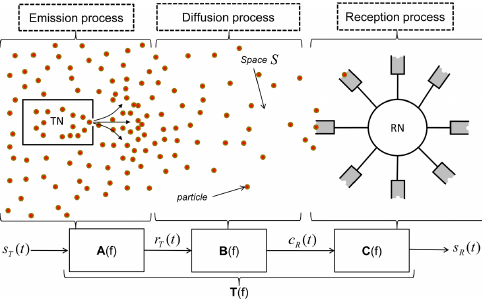Integrated Architectural Model of Nano Network Connections with RN and TN Layered Procedure (Based on Nano-Micro-Electronic PHD)
Researcher and author PhD student : Afshin Rashid
Note: The nano network is a nanoscale communication network between nano devices. Nanotechnology devices face certain functions due to their limited processing and energy management capabilities.
Therefore, these devices are expected to do simple tasks that require different and new approaches. To take advantage of the various features of nanotechnology, we need to use a proper architecture to manage and control a set of nanotechnologies in a complete nano network. In fact, different types of objects, sensors and devices can interact. An integrated architectural model of nano-network communications with a layered procedure combines defined network software (SDN), network performance virtualization (NFV), and IoT technologies. This combination can help in the field of nano networks. TN nano transmitters and electromagnetic RN receivers must perform operations such as performing basic band processing , frequency conversion, filtering and amplification of waves for their signals. Send or perform those that reach the nano antenna from the open space. Due to the fact that the nanotechnology will fluctuate in the tertiary frequencies, it is necessary to use FET RF transistors that are able to operate at these high frequencies .
Numerous transistors have been built and introduced in this area. At lower frequencies, nanotechnologies are able to communicate over longer distances, while the efficiency of nanowires in this case is very low. Therefore, nanosensors do not communicate at megahertz frequencies, and higher energy waves can be used to control a large number of nanotechnologies in a very large area. For this reason, nano-devices are connected in the frequency range of 1.0 to 10 terahertz. Due to the severe limitation of nano-devices in terms of size and energy, the production of high power signals at the terahertz frequency is not operational. Therefore, calculus communication patterns that are based on continuous signal communication are not feasible, and for WNSNs, OOK-TS: Keying Off-On is used. These techniques toEspecially in cases such as disease detection systems from outside the body and targeted drug delivery in the body, as well as the Internet of Things. Waves as carriers of information similar to classical communications. However, due to the severe shortage of resources and quantum effects of materials, classical methods cannot be applied directly in the field of nanotechnology. Therefore, it is necessary to use new materials and techniques. Quantum communication is based on the transfer of complex pairs from one place to another through exchange, repetition, and refinement. Quantum or parallel quantum interference gives us enormous computational power, especially in source coding, where information about the entire content is needed instead of individual inputs.
Conclusion :
The nano-network is a nanoscale communication network between nano-devices. Nanotechnology devices face certain functions due to limitations in the ability to process and manage energy.
Author: PhD Student ( Afshin Rashid)




